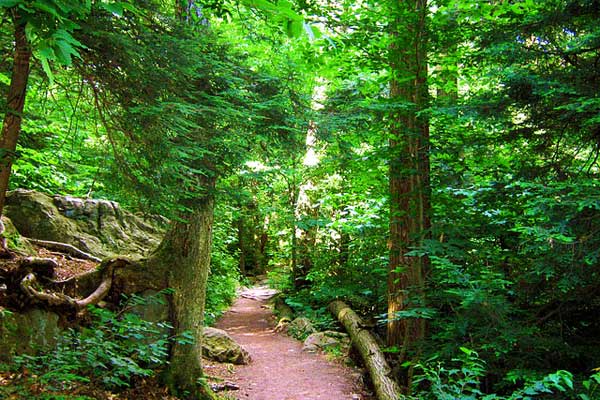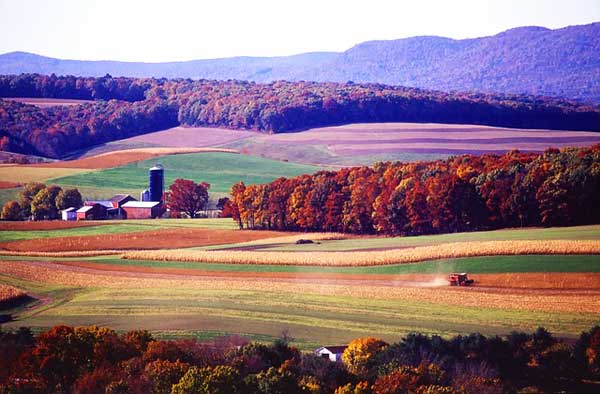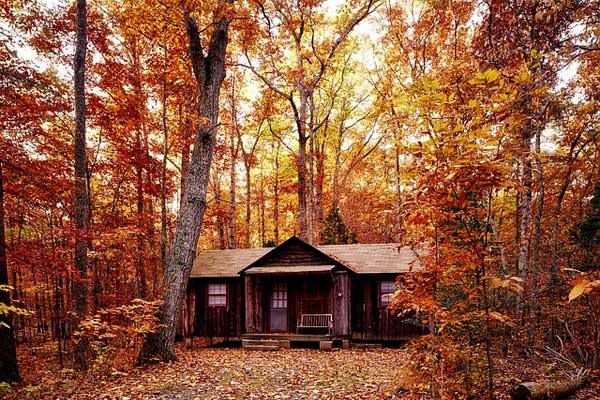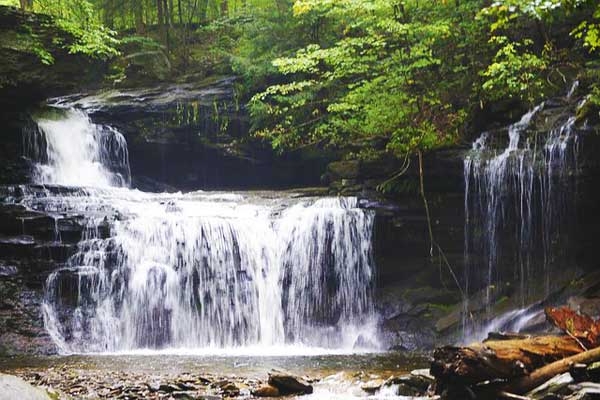The Appalachian Trail Pennsylvania section (PA) is flatter than most, making it a good destination for hikers who don’t want to deal with drastic elevation changes.
If you're interested in exploring the Pennsylvania Appalachian Trail sections, then check out this comprehensive guide to learn more.
Appalachian Trail PA Route Overview
Good weather and flat hiking, along with the opportunity to spot rattlesnakes and copperheads, make this 229 mile section of the Appalachian Trail a great spot for new hikers and wildlife enthusiasts.
Typical Pennsylvania Appalachian Trail Itinerary
Getting to the Trail: The Pennsylvania section of trail starts in Waynesboro, PA and ends in Delaware Water Gap, PA. We recommend leaving your car in Delaware Water Gap and taking a Greyhound bus to the town of Waynesboro. The Greyhound station is in Stroudsburg, PA, which is right beside the smaller town of Delaware Water Gap.

Day 1: Waynesboro, PA to Tumbling Run Shelters (8.6 miles)
Day 2: Tumbling Run Shelters to Quarry Gap Shelters (12.2 miles)
Day 3: Quarry Gap Shelters to Toms Run Shelters (13.6 miles)
Day 4: Tom’s Run Shelters to James Fry Shelter (10.9 miles)
Day 5: James Fry Shelter to Boiling Springs, PA (12 miles)
Day 6: Boiling Springs, PA to Darlington Shelter (14.3 miles)
Day 7: Darlington Shelter to Clarks Ferry Shelter (15.9 miles)
Day 8: Clarks Ferry Shelter to mile 1165.5 (20.1 miles)
Day 9: Mile 1165.5 to William Penn Shelter (18 miles)
Day 10: William Penn Shelter to Eagles Nest Shelter (19.2 miles)
Day 11: Eagles Nest Shelter to Windsor Furnace Shelter (14.7)
Day 12: Windsor Furnace Shelter to Allentown Hiking Club Shelter (16.5 miles)
Day 13: Allentown Hiking Club Shelter to Palmerton, PA (17.9)
Day 14: Palmerton, PA to Leroy A. Smith Shelter (15.6 miles)
Day 15: Leroy A. Smith Shelter to Kirkridge Shelter (13.8 miles)
Day 16: Kirkridge Shelter to PA-NJ Border (6.8 miles)

Benefits & Challenges of Hiking Appalachian Trail, Pennsylvania
Benefits
The Pennsylvania section has far less elevation change than other states. If you’re just getting into shape for hiking or struggle with climbing big mountains, this would be a good place for you.
There are a few cool points of interest along this section. There’s the sign for the official Appalachian Trail halfway point, which is very well made and an excellent photo opportunity.
There’s the famous “half-gallon challenge” at Pine Grove State Park. This is where hikers eat an entire half-gallon of ice cream to celebrate having hiked half of the Appalachian Trail.
There are lots of rattlesnakes and copperhead snakes in the Pennsylvania section. This could be a good thing or a bad thing, depending on how much you like snakes. If you’re hoping to spot some wildlife in their natural habitat, this is the hike for you.
This section of trail is not too crowded. Sure, there will be thru-hikers out and section-hikers as well. But it’s not a terribly popular destination, so you’ll never have to worry about getting a spot in the shelter or dealing with crowded campsites.

Challenges
The Pennsylvania section is incredibly rocky. This can cause quite a lot of foot pain for some hikers. Because of all the rocks, you have to pay attention to every step you take. This section requires a lot of focus.
Important Logistical Details

Guides & Accommodation
Guides: This section of trail is not nearly as difficult as more mountainous regions along the Appalachian Trail. Resupply options are plentiful. The rocky path does present a challenge in terms of having to pay attention and potentially dealing with foot pain.
Accommodation: Hostels and motels can be found in the towns of Waynesboro, Mt. Holly Springs, Boiling Springs, Carlisle, Duncannon, Lickdale, Port Clinton, Hamburg, Slatington, Palmerton, Wind Gap, and Delaware Water Gap. You can resupply on trail food in these towns as well. When not in town, there are ample shelters and campsites along the trail.

Best Time to Go & Difficulty
Best time: The Pennsylvania section can be hiked in spring, summer, and autumn. The summer months might be uncomfortably hot and humid, but it’s doable. Shoulder seasons are ideal for moderate temperatures.
Guides: The vast majority of hikers do not hire guides for the Appalachian Trail. You can find trekking agencies who will take you if you want a guide. However, the trail is easy to follow and there’s ample resources available. With proper planning and preparing, even new hikers can give it a try alone.
Cost & Permits

Costs will entirely depend upon how frequently you visit towns and stay in motels. If you just go into town to resupply and only occasionally stay in motels, you could get by on $100 a week. If you like to stay in motels often, eat at restaurants, and buy expensive food at grocery stores; you could easily spend a few hundred dollars a week.
Permits: There are no permits required to hike this section of trail.
Pro Tip
Get your gear in the pack and go for a short hike with it prior to getting to Pennsylvania. Ensure that you have it as light as possible, ideally under 10kg.
See our Appalachian trekking gear list here it should help you select only the must-have items!
Training For The Trek
The best way to learn how far the AT trek in Pennsylvania, USA is going to test your physical ability, is to go on some day-long hikes in your own country.
This will also allow you to break in your hiking shoes and increase your fitness level.
For your exercise routine, we recommend building a combination of hiking, cycling, swimming or rowing to get your heartrate up three times a week.
For aerobic exercise, it is important that you build endurance rather than run at a high intensity so for example if you are planning on jogging, running 5km-10km about 3 times a week at a consistent pace should be the intensity that you are aiming for.
Recommended Guidebook
The Appalachian Trail Conservancy and the Appalachian Long Distance Hikers Association work together every year to create the most up-to-date guide on the Appalachian Trail. It is called Appalachian Trail Thru-Hiker's Companion (2019).
In 2019 they included 50 updated maps, professionally crafted elevation profiles, and comprehensive tables for more easy access to the information while trekking.
It works both for thru-hikers and those who only want to trek a section or two.

Browse more Appalachian hikes and guides
See our complete guide to the Appalachian trail, or visit our section guides.



You recommend taking the Greyhound from Steoudsburg to Waynesboro but there is no Greyhound station in Waynesboro.
Is the Jail House Hostel in Palmerton open/closed has anyone stayed there in 2023 (recently)…
Hi,
I’ve hiked Springer to Damascus.
Im searching for someone to guide/carry weight for 8-10 weeks this summer on the AT.
Basically a strong porter.
Any thoughts would be appreciated.
Hi Robert, I’m sure you could find a willing porter or guide. I recommend hitting the hiking forums here to see if you can get any recommendations: https://www.appalachiantrailcafe.net/index.php/BoardList/